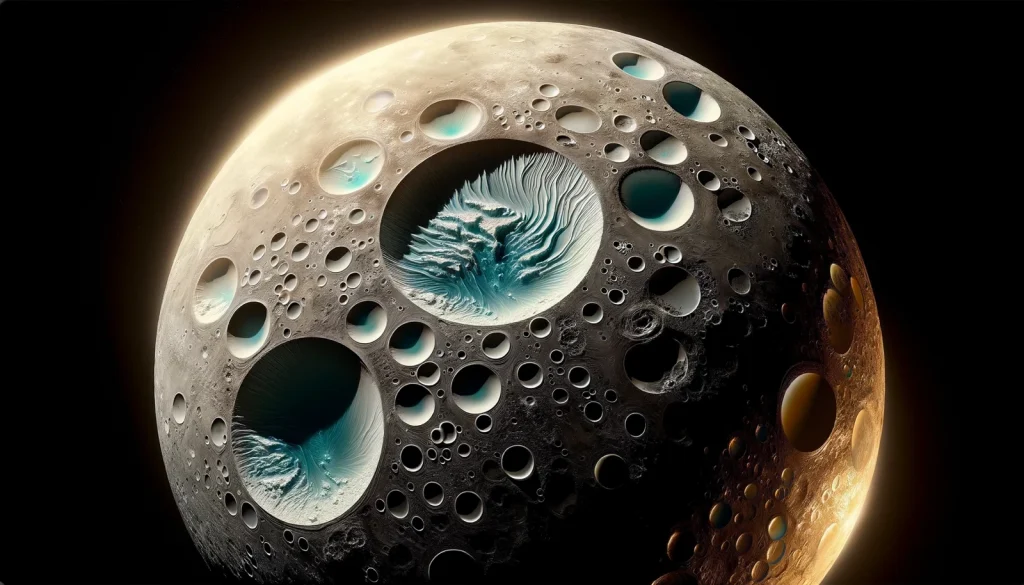Mercury, the smallest planet in our solar system, also holds the title of closest neighbor to the Sun. This tiny world, dwarfed by the gas giants further out, offers a glimpse into the harsh realities of existing so close to our star.
A Fiery Embrace: Mercury’s Environment
Sunburnt and Shadowed: Unlike any other planet in our solar system, Mercury endures an extreme dance with the Sun. Its incredibly close proximity, at only about one-third the distance of Earth, subjects it to scorching temperatures. On the sunlit side, surface temperatures can soar to a blistering 430°C (800°F), hot enough to melt lead. Surprisingly, despite this proximity, Mercury lacks a thick atmosphere like Venus to trap heat. This thin atmosphere, composed mostly of atoms blasted off the surface by the Sun’s wind, offers little protection, allowing these scorching temperatures to reign.
A World of Two Faces: Mercury’s rotation adds another layer of complexity to its environment. Unlike Earth’s daily spin, Mercury’s rotation is tidally locked. This means that the same side of the planet constantly faces the Sun, while the opposite side is shrouded in perpetual darkness. The sunlit side endures the scorching heat, while the dark side plunges to frigid temperatures as low as -180°C (-290°F). This dramatic temperature difference creates a harsh contrast across the Mercurian landscape.
A Surface Forged in Impact: Geology of Mercury
Looking at Mercury’s surface is like peering back in time to the violent birth of our solar system. The most prominent feature is the abundance of craters, a testament to a relentless bombardment by asteroids and comets early in the solar system’s history. Mercury lacks a substantial atmosphere to shield it from these impacts, leaving its surface riddled with craters of all sizes. Studying these craters, some spanning hundreds of kilometers, can offer clues about the types and sizes of objects that bombarded the planet in its past.
Beyond the craters, Mercury’s surface reveals some intriguing features. Smooth plains, likely solidified lava flows from volcanic eruptions, hint at a period of past geologic activity. Steep cliffs, called scarps, suggest ancient tectonic movements that may have reshaped the planet’s crust. These diverse geological features, while not as dramatic as those found on Earth or Mars, provide valuable insights into the history and evolution of this enigmatic world.
A World Beneath the Surface: Mercury’s Interior
Unlike Earth, where we can probe the internal structure through techniques like seismic readings, unraveling Mercury’s insides proves more challenging. However, based on various observations and density calculations, scientists believe Mercury possesses a differentiated interior, similar to Earth, with distinct layers: a core, mantle, and crust.
The biggest surprise lies in the core. Evidence suggests a disproportionately large iron core, making up about 70% of Mercury’s radius. This is significantly larger than the core-to-planet ratio found in Earth or other terrestrial planets. One theory suggests this anomaly might be the result of a giant impact early in Mercury’s history. A collision with a planet-sized object could have stripped away much of the lighter rock mantle, leaving behind the denser iron core as the dominant feature.

Another intriguing mystery surrounds the possible existence of a weak magnetic field at Mercury. A planet’s magnetic field is typically generated by the movement of liquid metal in its core. While the presence of a large iron core suggests the potential for a magnetic field, any such field detected so far is extremely weak compared to Earth’s. The reasons behind this remain a topic of ongoing scientific debate.
Surprises on the Scorched Planet: Recent Discoveries
One of the most surprising discoveries about Mercury challenges our understanding of its extreme environment. Despite the scorching heat on the sunlit surface, evidence suggests the presence of ice deposits in permanently shadowed craters at Mercury’s poles. These regions, shrouded in perpetual darkness, never receive direct sunlight and plunge to frigid temperatures, allowing ice to exist despite the overall harshness of the Mercurian environment.

Studying these polar ice deposits presents a significant challenge. Their location deep within permanently shadowed craters makes them difficult to observe directly from Earth-based telescopes or even spacecraft orbiting the planet. However, radar observations and analysis of data from missions like MESSENGER have provided strong evidence for the presence of water ice. Understanding the extent and composition of these ice deposits could offer valuable insights into the history of water delivery to Mercury and the potential for hidden reservoirs on other airless bodies.
Unveiling Mercury’s Mysteries: Future Exploration
Our understanding of Mercury has come a long way, thanks to pioneering missions like Mariner 10, which provided the first close-up images in 1974, and MESSENGER, the first spacecraft to orbit Mercury, which revolutionized our view of the planet between 2011 and 2015. These missions revealed the extent of Mercury’s cratering, its unique geological features, and the surprising presence of a tenuous atmosphere.
However, much about Mercury remains shrouded in mystery. The upcoming BepiColombo mission, a joint endeavor between the European Space Agency (ESA) and the Japan Aerospace Exploration Agency (JAXA), is set to arrive in 2025 and shed further light on the scorching planet. BepiColombo consists of two orbiters – the Mercury Planetary Orbiter (MPO) from ESA and the Mercury Magnetospheric Orbiter (MMO) from JAXA. This mission aims to study Mercury’s surface composition, investigate the existence of a magnetic field, and analyze the mysterious polar ice deposits in greater detail.
As we venture further into the scorching embrace of Mercury, future missions hold the promise to unlock even more secrets. Understanding this enigmatic world not only provides insights into the formation of our solar system’s rocky planets but also helps us appreciate the remarkable diversity of planetary environments that exist within our cosmic neighborhood.
